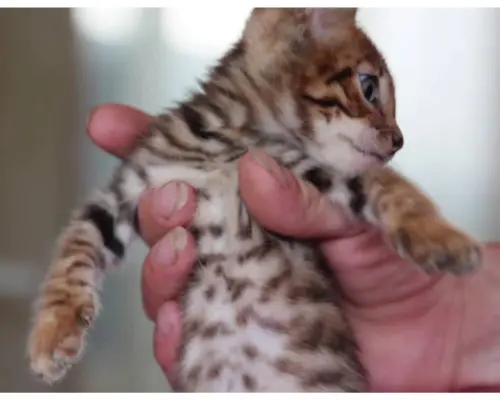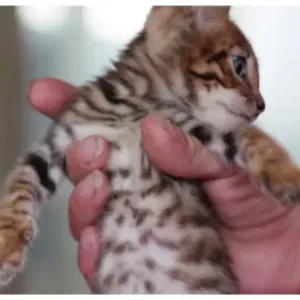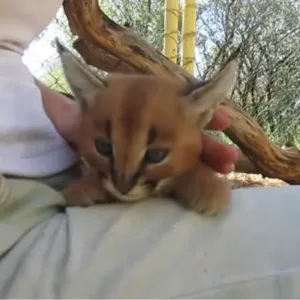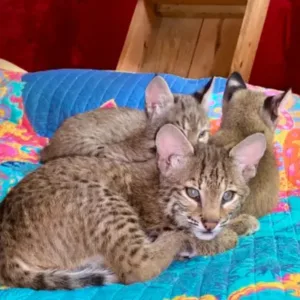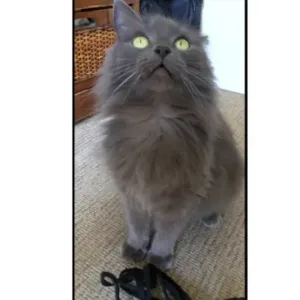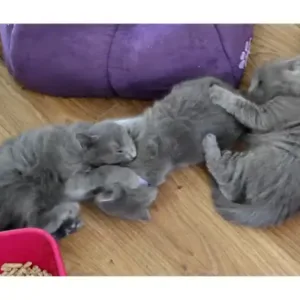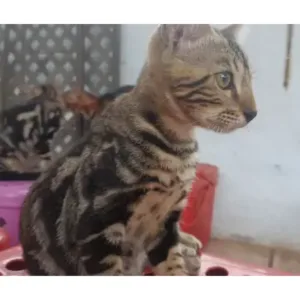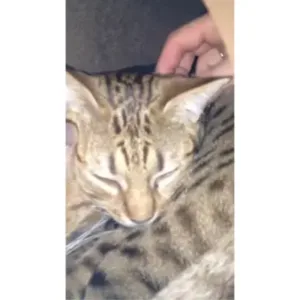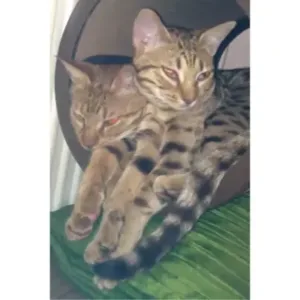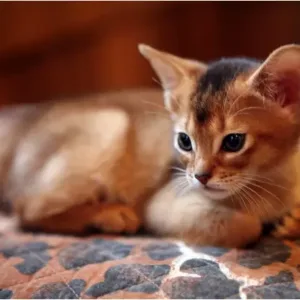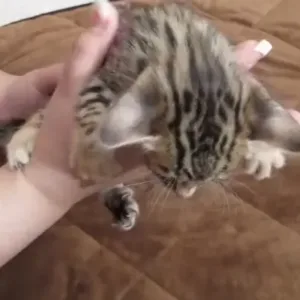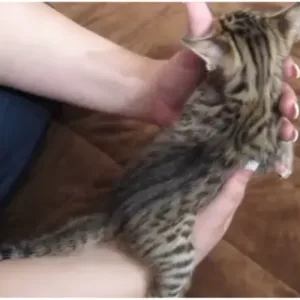The Toyger, the “designer cat” from the United States, is a domestic cat bred for the purpose of creating a cat-sized tiger. His name is a combination of “Toy” and “Tiger”.
Of course, an animal is not a toy, even if it has a name like Toyger. When you play with it, you are looking at a live animal that is interacting with you.
The only coat allowed for the Toyger cat is Brown Tabby. Its exact name is Brown Tabby Mackerel. The Toyger’s short, very silky coat looks somewhat like a tiger.
The Toyger is medium in size and has an athletic, muscular, elongated body with a broad chest, mid-length legs and large, powerful paws. This miniature big cat can reach a weight of 3.5 kg for the female and 4.5 kg for the male. It has a stature as robust as that of its big brother the tiger. Its legs are wide. The distance between its body and the ground is equal to the height of its body.
The head of the Toyger is long and wide. Its ears are generally slightly rounded.
Its eyes, which are deep in its skull, are also rounded. The chin of this cat breed is very distinctive. Its muzzle is long and broad.
The Toyger has a very pleasant nature: playful, cuddly, very curious and extremely intelligent.
The Toyger is specifically bred to be an indoor cat. Contrary to what one might expect from a miniature tiger, he is not an outdoor cat that walks freely. However, he does enjoy going out on the balcony, as long as it is safe. The little tiger cat can therefore lead a happy life as a city and apartment cat.
The Toyger is, by nature, closer to the couch cat than to the big hunting feline. It perfectly combines the appearance of a large Asian cat with the character of a cuddly cat, and thus fascinates its fans and owners.
As a potential future owner, it is important that you are prepared to provide this intelligent, playful and eager-to-learn pet with plenty of activities in the form of intelligence toys and other activities that stimulate its abilities.
Cat Agility and clicker training are good ways to mentally stimulate these lap tigers. For Toyger, play is as important as cuddling with his owners. Your Toyger will only be fully happy if you give him a life that matches his character, strengths and needs.
Alimentation Toyger
Cats are carnivorous animals. Because of their eating habits in the wild, the meat content of their food must be very high. BARF, or Biologically Adapted Raw Food, is a method of feeding raw food that is biologically adapted to the needs of each animal. For the Toyger, a BARF menu would consist of raw meat and offal. Many people consider BARF to be the best way to feed a cat because it is as close as possible to what a cat would eat in the wild.
When preparing food according to BARF standards, you should never use regular table salt, but only Himalayan or sea salt.
While the BARF diet has many fans, others swear by the usual wet food. In many homes, it is the staple of the cat’s diet. When purchasing wet food, however, it’s important to make sure it’s of high quality. Ratings from recognized institutions provide information on the different varieties available.
The protein content is an important element to consider when evaluating the quality of a type of cat food. Recommended products are those that contain high quality proteins that can be digested by our feline friends.
On the other hand, products that are not recommended are those that contain too much phosphorus. Some products contain up to six times the recommended amount. This overdose is detrimental to the cat’s kidneys. Chronic kidney disease is a common cause of death in cats. Some foods also significantly exceed the recommended amount of sodium.
One of the positive aspects of wet food is its high-water content, which is 80%.
Dry food contains a much lower proportion of liquid. Some criticize dry food because it would take into account mainly the practicality for humans: even if the cat consumes it all day while the owner is at work, it does not give off an unpleasant smell.
However, if you decide to feed him mostly dry food, make sure your little tiger meets his water needs as well. For example, you can set up a cat fountain and place water bowls in various locations around the apartment. This is in keeping with the cat’s natural diet of separate food and water bowls. Your little feline should be able to find in your home an imitation of the conditions he finds in the wild. Because a cat that has a lifestyle that is adapted to him is a happy cat.


